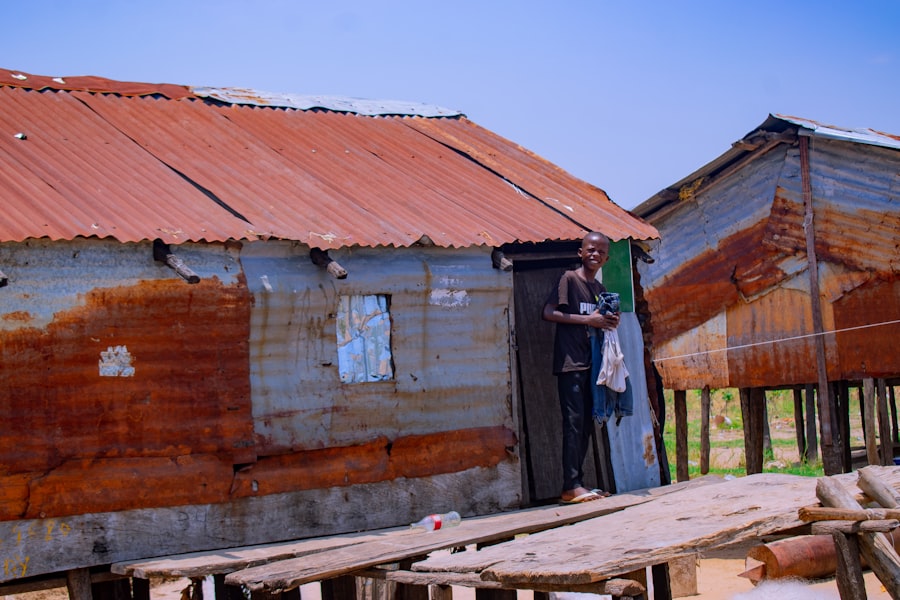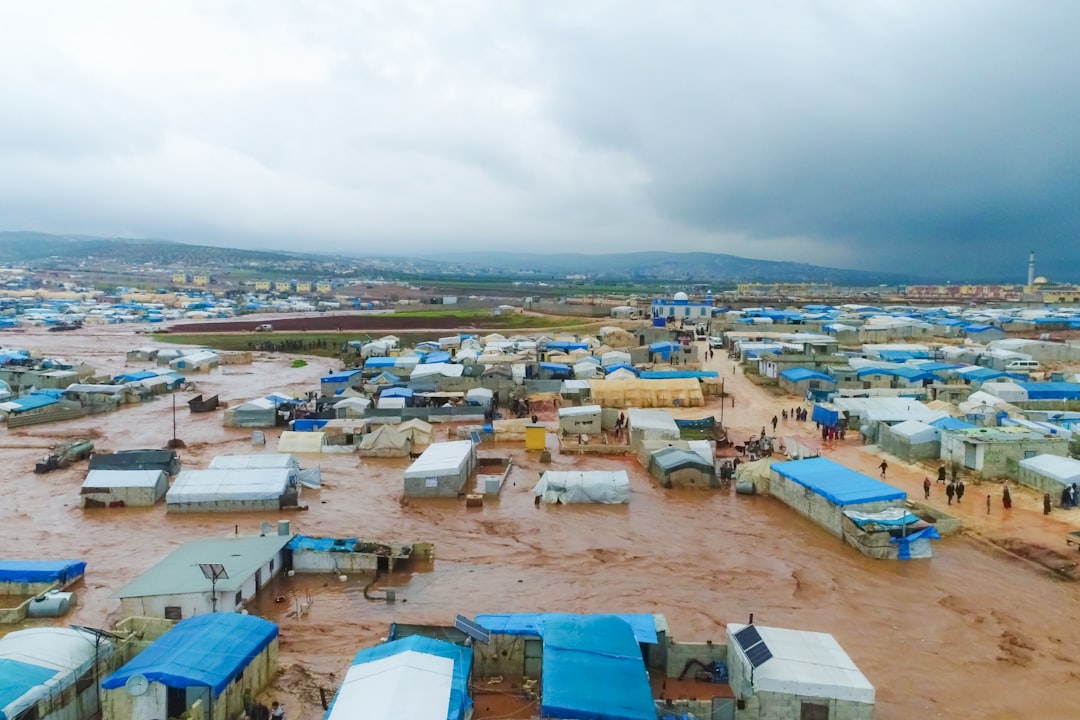As you delve into the complexities of the housing crisis, it becomes evident that its roots run deep within the fabric of the economy. The early 2000s marked a period of unprecedented growth in the housing market, characterized by soaring property values and an insatiable demand for homeownership. You may recall how the allure of easy credit and low-interest rates drew many into the market, creating a perfect storm for what would soon spiral into a crisis.
The combination of speculative investments, lax lending standards, and a culture that glorified homeownership led to a bubble that was destined to burst. As you reflect on this era, it’s crucial to understand how the rapid increase in housing prices created a false sense of security among buyers and investors alike. Many believed that real estate was a surefire investment, leading to a surge in home purchases and speculative flipping.
This frenzy was fueled by the belief that prices would continue to rise indefinitely, prompting individuals to stretch their financial limits. However, as you will see, this unsustainable growth laid the groundwork for a catastrophic collapse that would reverberate throughout the economy.
Key Takeaways
- The housing crisis has seen a significant rise, leading to widespread financial instability and hardship for many individuals and families.
- Subprime mortgages played a significant role in the housing crisis, as they allowed individuals with poor credit to obtain loans they could not afford.
- Financial institutions were heavily impacted by the housing crisis, with many facing bankruptcy and requiring government bailouts to survive.
- The government responded to the crisis with various measures, including the implementation of new regulations and the creation of programs to help struggling homeowners.
- The foreclosure epidemic resulted in a significant number of individuals losing their homes, leading to a devastating human cost and long-term societal impact.
The Role of Subprime Mortgages
In examining the housing crisis, you cannot overlook the pivotal role played by subprime mortgages. These loans were designed for borrowers with poor credit histories or limited financial means, often featuring adjustable rates that would eventually lead to higher monthly payments. As you consider the implications of these lending practices, it becomes clear that they were both a symptom and a catalyst of the crisis.
Lenders, eager to capitalize on the booming market, relaxed their standards and offered loans to individuals who were ill-equipped to manage them. You might find it alarming how these subprime mortgages proliferated during this time. Financial institutions packaged these risky loans into mortgage-backed securities, which were then sold to investors seeking high returns.
This practice not only masked the true risk associated with these loans but also created a false sense of security among investors. As you explore this web of financial engineering, it becomes apparent that the very instruments designed to democratize homeownership ultimately contributed to widespread financial instability.
The Impact on Financial Institutions

The repercussions of the housing crisis were felt acutely by financial institutions, which found themselves at the epicenter of the turmoil. As you analyze the fallout, it’s essential to recognize how banks and mortgage lenders became entangled in a web of bad loans and toxic assets. When homeowners began defaulting on their mortgages in droves, these institutions faced unprecedented losses that threatened their very existence.
You may recall how major banks were forced to write down billions in losses, leading to a crisis of confidence in the financial system. As you consider the broader implications for financial institutions, it’s important to note how this crisis prompted a reevaluation of risk management practices. Many banks had relied on flawed models that underestimated the likelihood of widespread defaults.
In your exploration of this topic, you may find it fascinating how regulatory bodies responded by implementing stricter lending standards and oversight measures aimed at preventing a repeat of such catastrophic failures.
The Government’s Response
| Country | Lockdown Measures | Economic Stimulus | Vaccination Campaign |
|---|---|---|---|
| USA | Stay-at-home orders | Stimulus checks | Mass vaccination sites |
| UK | Tier system | Furlough scheme | NHS vaccination program |
| Germany | Lockdown restrictions | Financial aid for businesses | Vaccination centers |
In response to the escalating crisis, government intervention became a necessity as policymakers scrambled to stabilize the economy. You may remember how various measures were introduced to address the immediate fallout from the housing collapse. The Troubled Asset Relief Program (TARP) was one such initiative aimed at providing financial assistance to struggling banks and restoring confidence in the financial system.
As you reflect on these actions, it’s clear that they were intended to prevent a complete economic meltdown. However, as you delve deeper into the government’s response, you might question whether these measures were sufficient or effective in addressing the root causes of the crisis. While TARP provided much-needed liquidity to banks, critics argue that it failed to adequately support struggling homeowners facing foreclosure.
The Foreclosure Epidemic
The foreclosure epidemic that ensued as a result of the housing crisis is perhaps one of its most devastating consequences. As you explore this phenomenon, you will encounter stories of families who lost their homes due to circumstances beyond their control. The wave of foreclosures not only devastated individual lives but also had far-reaching implications for entire communities.
Neighborhoods once filled with pride and stability became ghost towns as homes stood vacant and property values plummeted. You may find it particularly poignant how this epidemic disproportionately affected low-income and minority communities, exacerbating existing inequalities within society. As you consider the human toll of foreclosures, it becomes evident that this crisis was not merely an economic event but a social tragedy that left lasting scars on countless families.
The emotional and psychological impact of losing one’s home cannot be overstated, as many individuals grappled with feelings of shame, loss, and uncertainty about their futures.
The Human Cost of the Crisis

As you reflect on the human cost of the housing crisis, it’s essential to recognize that behind every statistic lies a personal story filled with hardship and resilience. Families who once dreamed of homeownership found themselves grappling with eviction notices and uncertainty about their living situations. You may recall hearing about individuals who had invested their life savings into homes only to see those dreams shattered overnight.
The emotional toll was profound, as many faced not only financial ruin but also a loss of community and stability. Moreover, as you consider the broader societal implications, it becomes clear that the crisis had ripple effects that extended far beyond individual households. Increased homelessness rates and rising demand for social services placed additional strain on local governments and non-profit organizations.
You might find it striking how this crisis illuminated systemic issues within society, prompting discussions about affordable housing, economic inequality, and access to resources for vulnerable populations.
The Aftermath and Recovery Efforts
In the aftermath of the housing crisis, recovery efforts became paramount as communities sought to rebuild and restore stability. You may recall how various initiatives emerged aimed at addressing both immediate needs and long-term solutions for housing affordability. Programs designed to assist struggling homeowners with loan modifications and refinancing options were implemented in an effort to prevent further foreclosures and promote sustainable homeownership.
As you explore these recovery efforts, it’s important to recognize that rebuilding trust in the housing market would take time and concerted effort from all stakeholders involved. Local governments began investing in affordable housing projects while non-profit organizations worked tirelessly to provide support services for those affected by the crisis. You might find it inspiring how communities came together in solidarity, demonstrating resilience in the face of adversity as they sought to create a more equitable housing landscape.
Lessons Learned from the Housing Crisis
The lessons learned from the housing crisis are invaluable as you consider how they can inform future policies and practices within the housing market. One key takeaway is the importance of responsible lending practices that prioritize borrower education and financial literacy. You may find it compelling how increased transparency in lending can empower consumers to make informed decisions about homeownership while reducing the risk of predatory lending practices.
Additionally, as you reflect on these lessons, it becomes clear that collaboration between government agencies, financial institutions, and community organizations is essential for creating sustainable solutions to housing challenges. You might appreciate how fostering partnerships can lead to innovative approaches that address both immediate needs and long-term systemic issues within the housing market.
The Role of Greed and Corruption
As you examine the housing crisis more closely, it’s impossible to ignore the role that greed and corruption played in its unfolding. Many financial institutions prioritized short-term profits over ethical considerations, engaging in practices that ultimately jeopardized the stability of the entire economy. You may find it disheartening how some individuals exploited loopholes in regulations for personal gain while disregarding the consequences for homeowners and communities.
This culture of greed extended beyond financial institutions; it permeated various sectors involved in real estate transactions. You might be struck by how some appraisers inflated property values to facilitate sales or how mortgage brokers misled borrowers about loan terms. As you consider these actions, it becomes evident that accountability is crucial in preventing similar crises from occurring in the future.
The Global Impact of the Crisis
The ramifications of the housing crisis were not confined to the United States; they reverberated across global markets, highlighting the interconnectedness of today’s economy. As you explore this global impact, you may recall how countries around the world experienced economic downturns as a result of exposure to U.S.-based mortgage-backed securities. Financial institutions in Europe and Asia faced significant losses as they grappled with their own exposure to toxic assets.
You might find it fascinating how this crisis prompted international discussions about regulatory reforms aimed at preventing future financial disasters. As countries sought to stabilize their economies, collaborative efforts emerged to address systemic risks within global financial markets. This interconnectedness serves as a reminder that economic policies must be approached with a global perspective in mind.
The Future of Housing and Economic Policy
Looking ahead, you may wonder what lessons from the housing crisis will shape future housing and economic policies. As communities continue to grapple with issues related to affordability and access to homeownership, innovative solutions will be necessary to create sustainable pathways for individuals seeking stable housing. You might find it encouraging how policymakers are increasingly recognizing the importance of affordable housing initiatives as part of broader economic strategies.
Moreover, as you consider potential reforms within financial institutions, there is an opportunity for greater accountability and transparency in lending practices moving forward. You may appreciate how fostering a culture of ethical responsibility can help restore trust among consumers while promoting stability within the housing market. Ultimately, your exploration of these topics underscores the importance of learning from past mistakes while striving toward a more equitable future for all individuals seeking safe and affordable housing options.
The ongoing housing crisis has become a pressing issue, as highlighted in various economic documentaries that explore its causes and effects. For a deeper understanding of the factors contributing to this crisis, you can read a related article that discusses wealth accumulation and its impact on housing markets. Check it out here:
